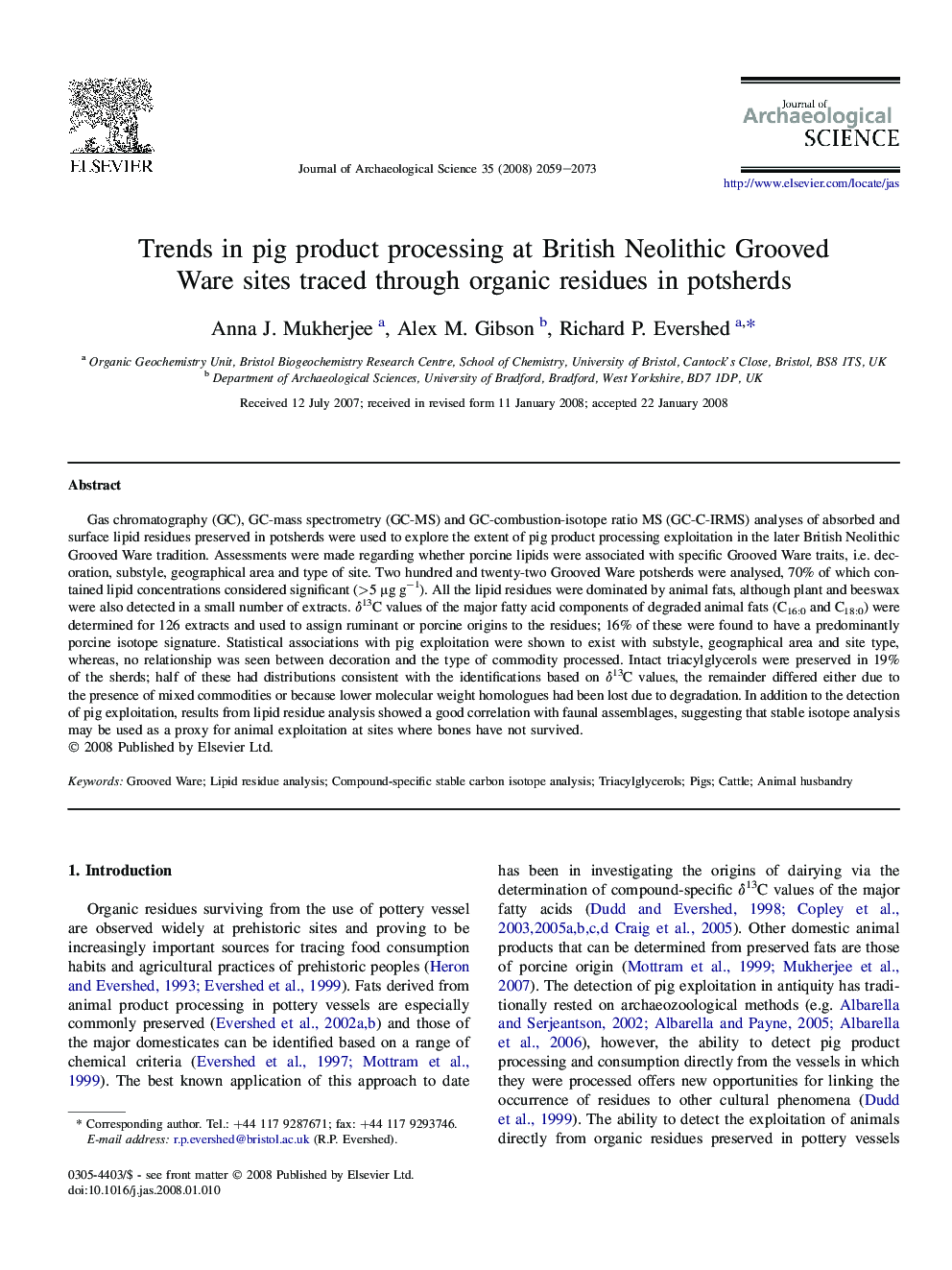| Article ID | Journal | Published Year | Pages | File Type |
|---|---|---|---|---|
| 1037270 | Journal of Archaeological Science | 2008 | 15 Pages |
Gas chromatography (GC), GC-mass spectrometry (GC-MS) and GC-combustion-isotope ratio MS (GC-C-IRMS) analyses of absorbed and surface lipid residues preserved in potsherds were used to explore the extent of pig product processing exploitation in the later British Neolithic Grooved Ware tradition. Assessments were made regarding whether porcine lipids were associated with specific Grooved Ware traits, i.e. decoration, substyle, geographical area and type of site. Two hundred and twenty-two Grooved Ware potsherds were analysed, 70% of which contained lipid concentrations considered significant (>5 μg g−1). All the lipid residues were dominated by animal fats, although plant and beeswax were also detected in a small number of extracts. δ13C values of the major fatty acid components of degraded animal fats (C16:0 and C18:0) were determined for 126 extracts and used to assign ruminant or porcine origins to the residues; 16% of these were found to have a predominantly porcine isotope signature. Statistical associations with pig exploitation were shown to exist with substyle, geographical area and site type, whereas, no relationship was seen between decoration and the type of commodity processed. Intact triacylglycerols were preserved in 19% of the sherds; half of these had distributions consistent with the identifications based on δ13C values, the remainder differed either due to the presence of mixed commodities or because lower molecular weight homologues had been lost due to degradation. In addition to the detection of pig exploitation, results from lipid residue analysis showed a good correlation with faunal assemblages, suggesting that stable isotope analysis may be used as a proxy for animal exploitation at sites where bones have not survived.
